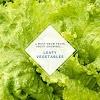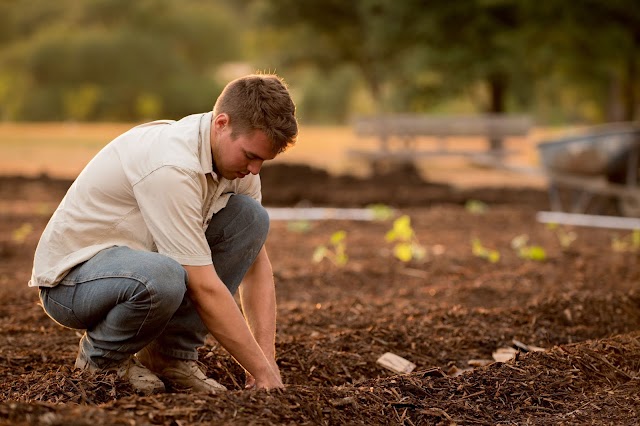As shown in the quick reference guide for vegetable planting, some plants can be grown in your
garden from seed. Other plants are more often started inside, either because they cannot handle
the cold conditions of the early growing season or because they need such a long season to grow
that they need to start growing while there is still snow on the ground (or both). If you start plants
inside, you raise them to a certain size and then transplant them out into your garden (see transplanting).
Starting plants inside is not particularly recommended for beginning gardeners. There are several
reasons for this,
1) Space -- Starting more than a few plants takes space inside a house or apartment that many beginning gardeners do not have. You can’t start plants just anywhere – you have to start them in a
place that’s warm, with good light, where you are comfortable spilling water and/or soil.
2) Light – In the late winter, when many gardeners are starting plants inside, days are short and the
light that reaches into your house or apartment is weak. If they grow at all, plants grown under these
conditions tend to become very tall and thin (a look sometimes called “leggy”) as they search for
light. Leggy plants do poorly when transplanted into the garden. As a result, gardeners who are serious about starting plants inside buy grow lights and place these very close to their plants to provide
extra light.
3) Cost and time – Besides the cost of the seeds you wish to plant, starting plants inside requires
pots, potting soil, and often lights (see above) and the cost of the electricity they use. Starting plants
also requires some time – in addition to planting, you must also water, turn lights on and off, etc.
Starting plants inside can be very fun and rewarding, but most beginning gardeners will want to buy
plants at a farmers’ market or garden store (see getting seeds and transplants).
For those who do wish to start plants inside, most garden stores now kits (sometimes called “seedstarting kits”) that contain everything you need to get started with indoor growing, including instructions. To find instructions on starting plants inside without buying a kit, refer to one of the allpurpose gardening resources mentioned in sources for more information.
The first step in starting seeds inside is to sow seeds thickly in a flat
(shallow tray) full of potting soil. The tray shown here is made of wood,
but modern trays are usually plastic. Seeds can be planted in furrows
pressed into the soil, as shown here, or scattered over the soil surface
and covered with a thin layer of additional soil. Water, light, and warmth
are critical for germination and growth of your seedlings.
Before seedlings become crowded in a flat like the one shown at
left, they should be transplanted carefully to individual pots (either
paper or plastic) or into another plastic tray that is divided into little
boxes. Some plants, especially vining crops like cucumbers, winter squash, and melons, should be started in small pots or cells
from the beginning.










